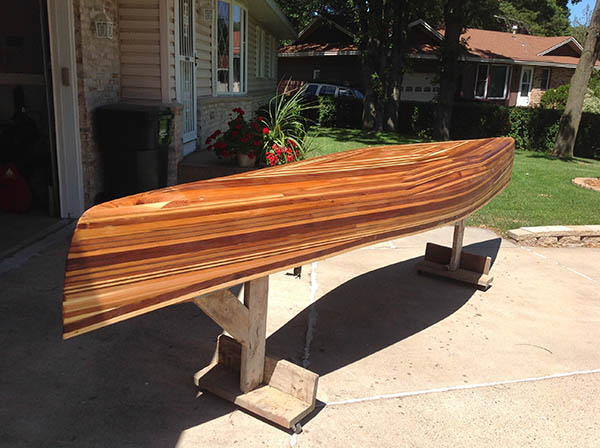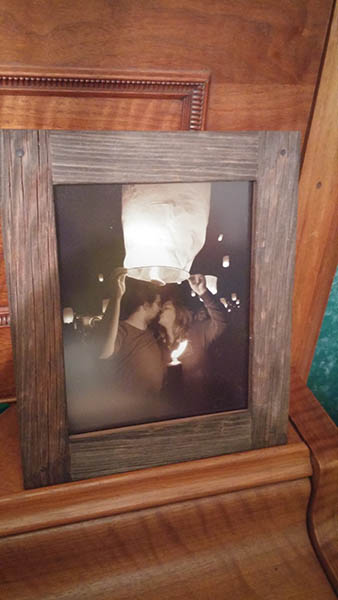
In last issue’s editorial, Rob bemoaned the current trend toward distressed wood in fine furniture. Several readers agreed with his opinion. – Editor
“Rob, these days it’s the kids who are dressing as you describe. I see more black socks and sandals on teenagers, along with pajama shorts, than you can shake a walking stick at. They look like they ought to be in Florida shuffling along the boardwalk or something. And, yes, my wife likes ‘primitive’ and ‘distressed’ furniture, too. I tell her I’ll make her something beautiful out of gorgeous wood, then sand it, finish it, buff it out, chain it behind my truck and drag it a mile or two, then give it to her. That way we’ll both be happy!” – Tom Conlin
“I’m with you on this one, Rob. In my opinion, furniture is supposed to look like furniture. Good wood, matching grain, good-looking finish. I’ll use the landfill-destined wood to make shelving for the workshop and plant stands, etc.” – Robert Crowder
“I spend a lot of time massaging my wood with planes and sanders, I agree with you completely. I saw a dining table at our local home show this last weekend that was made (somehow) with tree bark as the tabletop. I couldn’t even conceive of how you would use it.” – Dale Nargang
“I have to agree with you, Rob. It amazes me that people want furniture that looks worse than old worn items that I’ve either thrown out or broke up and burned in the fireplace.” – Robert Hoffman
“All I can do is shake my head as I walk through furniture stores and look at what they are selling. I can’t tell if this is what customers truly want or if ‘distressed’ is just a way for manufacturers to hide the fact they can’t find the craftsmen needed to make quality furniture. I’m not the greatest at making fine furniture, but I certainly wouldn’t want my name on any of that junk.” – Mike Sztukowski
“I agree with you fully. Hopefully this rustic trend will end soon. I can’t believe some of the prices I see for rotten wood — and I don’t mean
spalted. What bothers me the most is that a lot of space at the hardwood dealers I frequent is now being taken up with the stuff. They have stopped carrying some of their hardwood, especially high-end figured wood, and stocked both real and fake ‘barn wood.’ It’s all over the place.” – Don Bullock
While others showed more of an appreciation for either the rustic look, or the concept of re-using wood in general. – Editor
“I’ve been using weathered wood off an old smokehouse to build bluebird houses. They seem to find it very chic.” – Andy Mahler

“I take severe umbrage to your comments on used wood. I have been building canoes and kayaks for the last nine years using only used, discarded (think dumpster diving here), reclaimed or tree trimming wood. My boats are not only visually appealing but are quite seaworthy as well. This, my most recent boat, is built from an old fence and cedar trim removed from an old cabin that was being remodeled. The seats are made from a discarded butcher block countertop and seat belts removed from junked cars. The thwarts, gunwales, portage yolk and breasthooks will be made from downed elm, oak, ash maple and walnut trees. The portage pads are made from discarded plywood and junked automobile seating foam and leather.” – Bill G
“I like creating fine wood pieces and have built many over the years. I have built over 1,000 boxes and recently started creating my own rustic textures. Sometimes we just need a change of pace to keep things in perspective and keep the creative juices flowing. Surprisingly, these have been well received and have sold quite well at shows that I participate in. You never know what catches a person’s attention.” –
Greg Little
For some, the distinction keyed in on whether the wood was fake or genuine old wood. – Editor

“Well said, Rob. I also think distressing wood to make it look old is a crime. I have had the opportunity to take some genuine old wood (Iowa barn boards) and make some great projects. I used a blend of black tea and iron oxide to “age” the edges that were milled. Hooray for authentic old things! Us included (I turned 50 this year).”- Rob Skow
“I agree on your comment, but keep quiet at least through the summer. I live two places, one of them being a lake cabin in southern Minnesota. My father, back in the 1980s, bought enough barn wood to panel all the walls in garage and cabin. I have removed just about all of it and am hoping to sell it to help pay for an addition that is in progress. So: shh!” – Patrick Ahern
And one reader reminded us that, in furniture styles as in clothing fashions, there’s hardly anything new under the sun. – Editor
“Nothing new in the world of wood! When I returned to the USA in 1973 from my seven-year furniture apprenticeship, I found that my contemporaries, who were living in communes and living life as hippies, were making and selling furniture made from barn wood, old pallets and other used and, in my eye, crappy wood. I was really pissed off! I’d spent seven years learning to make beautiful furniture using the finest materials available. Hardware that was made for each piece and my work was often covered in beautiful veneers and marquetry. I had trouble finding galleries that would show my work! They said they couldn’t sell my work and instead were handling the crap furniture my untrained contemporaries were literally pounding out!
“Well, 46 years later I’ve had a great career, made and sold work to clients all over the country. Got past the groovy 1970s, the power 1980s, the me decade of the 90s. I’m glad I made the decision to be a furniture designer/maker who has always made every piece of the finest materials possible. I’ve avoided commissions for live edge pieces and for many jobs that just didn’t fit my view of fine furniture.
“It is really true that if you live long enough, everything comes around, then comes around again. So it is with all this crappy-looking mismatched used lumber furniture. Just like the tie-dyed T-shirts and bell-bottomed jeans from the 60s and 70s that we all made ourselves. They’re back, only you buy them at your local department store and it’s the in style! Now they’re selling ‘fine furniture’ made of rough, mismatched and, in my eye, poorly finished used lumber and it’s the in style!
“If you spend time studying furniture history, you find cycle after cycle, and what’s old becomes new again. I just smile knowing that somewhere down the road. styles will change yet again and today’s makers working in crappy material will evolve into makers working in more refined styles, whatever they may be! The common thread is the human need to express creativity. I’m just glad folks are still making and using their hands, eyes and brains!” – Clint Struthers







